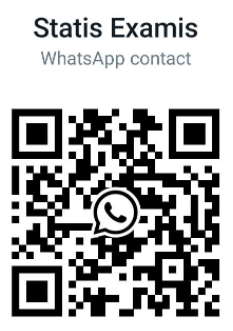Navigation » List of Schools » California State University, Northridge » Music » Music 306 – Introduction to Jazz » Spring 2022 » CH 01-06 Review Quiz
Question #1
A Louis Armstrong
B Fletcher Henderson
C Paul Whiteman
D Duke Ellington
E Bix Beiderbecke
Question #2
A Their music was a rebellion against white middle class culture.
B They were named after a Chicago high school some of them attended.
C Their ranks included only horn players
D They were a group of white jazz musicians born mostly between 1904 and 1909 and active in Chicago.
E They created the Chicago style, which featured aggressive rhythms, expansive solos, and polyphonic theme statements.
Question #3
A propulsive boogie-woogie patterns
B steady, on-the-beat background chords
C an idiosyncratic style that played constant games with the rhythmic pulse
D slow-moving regular rhythms
E using tremolo to give the sense of no rhythmic movement
Question #4
A New Orleans
B Chicago
C New York
D Detroit
Question #5
A wrote an influential series of guides to improvisation
B established collective improvisation as the main kind of jazz improvisation
C established jazz as music that prizes individual expression through solo improvisation
D established the development of technique as an end in itself
E carefully composed a large body of passages and played them the same every time
Question #6
A became the most influential composer in the jazz community
B transformed the social music of New Orleans into an art
C only major figure of Western music to influence the music of his era equally as an instrumentalist and as a vocalist
D influenced symphonic trumpet players with his vibrato
E influenced popular and country performers with his phrasing and spontaneity
Question #7
A regular left-hand alternation between bass notes and chords
B slow-moving “walking” accompaniments
C constant left-hand tremolo
D two-handed block chords
E fast right-hand arpeggios
Question #8
A Harlem
B Greenwich Village
C Upper West Side
D Times Square
E Washington Heights
Question #9
A black ensembles playing for white audiences
B integrated ensembles playing for integrated audiences
C white ensembles playing for black audiences
D integrated ensembles playing for white audiences
E white ensembles playing for white audiences
Question #10
A to demonstrate that only New Orleans jazz was the authentic jazz
B to show that white musicians could perform raucous improvisations
C to reveal that jazz elements could form the foundation of highbrow art music
D to show that Louis Armstrong was the “King of Jazz”
E to argue that the blues was the soul of jazz
Question #11
A It encouraged musicians to avoid alcohol.
B It caused musicians to migrate away from larger cities.
C It caused many jazz musicians to become full-time composers.
D All of the answers are true.
E It provided abundant (dangerous) work opportunities for jazz musicians in illegal speakeasies.
Question #12
A It decentralized the jazz infrastructure across the country.
B It had no effect, since home audio systems were prohibitively expensive.
C It forced performers to improve their technique.
D It led audiences to stay home and obsessively listen to specific broadcasts and recordings.
E It drew audiences away from jazz and to sophisticated classical performances.
Question #13
A All of the answers are true.
B radio networks
C book publishers
D grand theaters
E record labels
Question #14
A
B Brooklyn
C The Bronx
D Queens
E Manhattan
F Staten Island
Question #15
A clarinet
B piano
C banjo
D bass
E saxophone
Question #16
A It featured two trombones.
B The clarinet lines were performed by the group’s pianist.
C It featured two clarinets.
D It featured two cornets.
E It included violin.
Question #17
A They took place in Los Angeles.
B They are the first significant racially integrated jazz recording sessions.
C They took place in New Orleans.
D They are the first live recordings made in a jazz club.
E They took place in Chicago.
Question #18
A an increasing reliance on agricultural labor
B a work shortage initiated by American entry into World War I
C widespread segregation in the American south
D fear generated by unequal protection under the law
E few opportunities for black Americans to own land
Question #19
A solo improvisation
B collective improvisation
C harmonic improvisation
D use of blue notes
E frequent syncopations
Question #20
A play a decorated bass line that includes glissandos
B present the melody with improvised variations
C arpeggiate the underlying harmony of the tune
D present a steady stream of notes maintaining the dominant pulse of the tune
E play a countermelody in a register higher than the trumpet or cornet’s line
Question #21
A trumpet, clarinet, trombone
B clarinet, flute, saxophone
C piano, tuba, drums
D trombone, tuba, banjo
Question #22
A the fast passages in his playing
B his variations on march themes
C his ability to play two trumpets at once
D the understatement of his playing
E the loudness of his playing
Question #23
A Buddy Bolden
B Freddie Keppard
C Manuel Perez
D Joe Oliver
E Barney Bigard
Question #24
A homophonic—solo plus accompaniment
B polyphonic—collective improvisation
C monophonic – solo plus accompaniment
D
E fully composed melodies and countermelodies
F monophonic—solo playing
Question #25
A It avoids blue notes and other blues inflections.
B It’s one of the fastest recorded performances of syncopated music.
C It provides crucial evidence for the transition between ragtime and jazz.
D All of the answers are true
E It’s an early example of ragtime drumming.
Question #26
A by playing concerts
B through publishing royalties
C by conducting a brass band
D through record sales
E by licensing his music for use in films
Question #27
A to subject it to a process of rhythmic complication
B to extend a short piece by repeating sections
C to improvise a march
D to dance to it
E to perform it poorly
Question #28
A piano with banjo accompaniment
B string ensemble
C symphonic orchestra
D large military-style band
E small jazz combo
Question #29
A In the mid-nineteenth century it was the most popular form of theater in the country.
B It generated negative racial stereotypes.
C Its music used African-derived instruments including the banjo.
D It was only performed in the American South.
E It was originally performed by white performers in heavy black makeup.
Question #30
A dishrag
B bucket
C sponge
D mop
E plunger
Question #31
A 50
B 100
C 150
D 250
E 200
Question #32
A Singers did not receive copyright royalty, just a modest performer’s fee.
B Singers were pressured by executives to record only the blues.
C They did not sell many copies.
D They were recordings of black music for black listeners.
E Many of the original recordings have been preserved.
Question #33
A drums
B guitar
C piano
D trumpet
E saxophone
Question #34
A ten-line stanza
B two-line couplet with first line repeated
C two-line stanza
D four-line stanza
E two-line couplet with second line repeated
Question #35
A English
B African American
C Nigerian
D Cuban
E South African
Question #36
In “polishing” the rural blues that he heard in Mississippi, W. C. Handy did which of the following?
A All of the answers are true
B He rehearsed it with his ensemble.
C He composed his own lyrics.
D He published sheet music.
E He notated the music.
Question #37
A connection to African traditions
B virtuosity
C artistic merit
D high-class status
E commercial appeal
Question #38
A Rhythm Chorus
B Standard Blues
C Rhythm Changes
D Popular Song
E Bird Blues
Question #39
A verse
B turn
C bridge
D chorus
Question #40
A Abandon familiar musical elements in order to create something new.
B Embellish a composed melody.
C Improvise using only a single scale.
D Ignore the contributions and suggestions of the accompanists.
E Create new melodies that fit over the tune’s chord progression.
Question #41
A baritone saxophone
B trumpet
C clarinet
D drums
E bass
Question #42
A ABAC
B ABCD
C AAAA
D AABA
E ABAB
Question #43
A two six-measure phrases
B three phrases of four measures each
C four phrases of three measures each
D six two-measure phrases
E an eight-measure phrase followed by a four-measure phrase
Question #44
A a rhythmic cycle
B a precisely measured amount of clock time
C a carefully notated concert performance
D a harmonic sequence
E only the rarest or ritual practices
F
Question #45
A legato
B portamento
C pizzacato
D staccato
E arco
Question #46
A meter
B harmony
C tempo
D dynamics
E rhythm
Question #47
A crash cymbal
B splash cymbal
C tam-tam
D ride cymbal
E high-hat
Question #48
A banjo
B clarinet
C trumpet
D trombone
E tuba
Question #49
A valve
B mouthpiece
C key
D larynx
E mute
Question #50
A melody
B pitch
C timbre
D harmony
E rhythm




